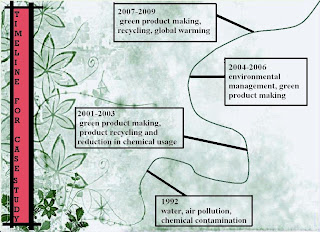How you can help conserve the environment
Today’s society is placing high amounts of pressure on our environment – whether it be for transport, housing, food, entertainment, or work, we are constantly impacting on our natural environment. Some of the visible forms of negative impacts of humans are:
* pollution in our waterways and on our beaches,
* litter,
* loss of native bushland,
* destruction of our marine environment,
* rapidly decreasing water supplies,
* disappearance of native animals, and
* polluted atmosphere affecting our health.
Here are some easy steps you can take to help look after our environment:
1. Ride a bike or walk whenever you can – to the shops, to school, to work. Cars are one of the worst pollutants in today’s society, and petrol is from a non-renewable source (and the exercise is good for you).
2. Save Water! Install a water-saving shower head, use mulch in the garden, use a bucket when washing the car, use a broom or rake to remove leaves from the driveway (don’t hose them down the stormwater), install a rainwater tank, if possible recycle your greywater (from laundry or shower - see the Environment Protection Australia website for further information, 'Info Bulletin 812'), and turn off the tap when cleaning your teeth. For further information on conserving water see the Melbourne Water website
3. Save Energy! Install energy saving light bulbs, turn off lights when you leave a room, purchase energy-efficient electrical goods (use the star rating system on the front of the items), insulate your home to reduce heating and cooling energy needs (and costs!). Remember to keep your car well serviced to reduce fuel and oil needs, and greenhouse gas emissions. (See the Environment Protection Authority, Victoria, website for more ideas on reducing your car’s environmental impact)
4. Remove Pest Plants many garden plants have become pests which can escape the garden, and out compete natives. Please remove any pest plants that are on your property. Some of the main pest species in Casey are:
o African Lily – Agapanthus species
o Angled Onion – Allium triquetrum
o Bulbil Watsonia – Watsonia meriana cv. Bulbillifera
o Bluebell Creeper – Sollya heterophylla
o Cape Broom – Genista monspessulana
o Cape Wattle – Paraserianthes lophantha
o English Ivy – Hedera helix
o Mirror Bush – Coprosma repens
o Monterey Pine (Radiata) – Pinus radiata
o Pampas Grass - Cortaderia selloana
o Sweet Pittosporum – Pittosporum undulatum
o Wandering Jew – Tradescantia albiflora
For more information on any of these species please refer to the following websites:
o Department of Natural Resources and Environment
o Environment Australia
o Weeds of National Significance
5. Plant native species – indigenous trees and shrubs encourage our native birds and wildlife, and reduce erosion. They are also tolerant of our weather conditions, so don’t need watering or fertilising like foreign species.
6. Double side paper when printing and photocopying – both at work and at home. Scrap paper can be used for notes, or recycled. If you have lots of single sided pages, turn them over and bind them together (staple or twine) and you have an instant scribble book you can put by the phone!
7. Try and purchase durable items - they are designed to last longer and are more readily repaired. This will reduce the amount of materials you are disposing of. Rather than throw out items you do not want any more, donate them to charities or sell them at second hand markets.
8. Donate old clothes, blankets and furniture at opportunity shops and relief agencies so they can be distributed to those in need – don’t send them to landfill. Animal shelters also willingly accept any old blankets or clothing.
9. Reuse old newspapers to control weed growth when planting trees and shrubs (reducing the need for chemicals). Composted kitchen scraps and garden waste will also help, as they act as mulch preventing weeds and providing nutrients.
10. Recycle old timber products instead of buying new products where possible. This saves energy and helps protect forests from further clearing.
11. Join a local conservation group and help improve your local environment. There are many Friend’s groups in Casey that you can join:
o Friends of Allen Street
o Friends of Cardinia Creek Sanctuary
o Friends of Cardinia Reserve
o Friends of Colley Street Bushland Reserve
o Friends of Dandenong Police Paddocks
o Friends of Eumemmerring Creek
o Friends of Harkaway Reserves
o Friends of Morning Mist Reserve
o Friends of Rivergum Creek
o Friends of Royal Botanic Gardens Cranbourne
o Friends of Wilson Botanic Park
o Narre Warren South Friends of Rivergum Creek Reserve
Other groups include:
* Berwick-Pakenham Bushcare
* Blind Bight Coast Action Committee
* Cardinia Landcare Catchment Group
* Kooweerup - Lang Lang Landcare Group
* Narre Warren Community Action Group
* Tooradin Coast Action Committee

















